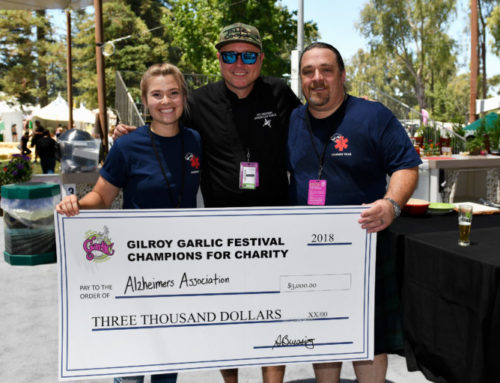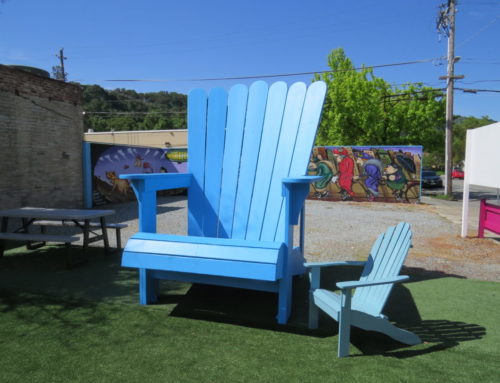Mother Nature doesn’t always cooperate in wine-making business
Published in the Sept. 18 issue of Morgan Hill Life:
By Cindy Adams

Cindy Adams
For wineries in the northern hemisphere, this is a very exciting time — harvest. This is when the new vintage is “born,” as the grapes are picked, pressed and fermentation begins. Have you ever wondered how wine is actually made and how different flavors “get into” the wine you’re drinking? Well, a lot of it begins right here.
Beginning about the first part of August, the grapes change color from green to (in most cases) a deep, rich purple. Some grapes, such as Chardonnay and Sauvignon Blanc, remain green but turn a deeper shade. This color change is called veraison. At this point, the grapes look like they’re ready to pick, but they’re not. During August and well into September, the grapes will now use the warmth of the summer sun to get their sugar levels up. Then, the winemaker will go into the vineyards and test the grapes for sugar levels, either by using a tool called a refractometer or by tasting and using his own instinct. What the winemaker is looking for is the right Brix level. This is the term of measurement to determine if there is enough sugar in the grapes to begin to harvest. Generally, grapes are harvested between 20 and 26 Brix.
Once the winemaker decides to harvest, the work begins. Some wineries use machines to harvest their grapes, but most are harvested by hand and put into large bins. It’s nice if each type (varietal) of grape ripens at a different time, even if it’s just a few days apart, but Mother Nature doesn’t always cooperate and sometimes there will be bins and bins of different types of grapes coming in all at once.
Once the grapes are harvested, they need to be pressed as soon as possible. Here at Guglielmo Winery, we have a very large machine called a destemmer/crusher, which does exactly what the name implies — it gets the stems, twigs and leaves off the grapes, then crushes the fruit to get the juice.
By the way, did you know that all grape juice is clear or a light yellow? If that’s the case, then how do we get red wine? You’re about to find out. Once the grapes are pressed and we have the juice, then one of two things happens. If we’re making a white wine (Chardonnay, Pinot Grigio, etc.) then the juice gets pumped into large fermentation tanks and yeast is added and the grape juice begins to turn into wine.
The yeast works on the sugar in the grapes and “eats” it up. When it does this, three things are created: alcohol, carbon dioxide and heat. The carbon dioxide evaporates and the alcohol stays in. The heat can be a problem, though, because if the fermenting juice gets too warm, then the yeast will die before it completes its job of changing the sugars into alcohol. So, the fermentation tanks are now refrigerated to keep them at a cool temperature. When the yeast is done, most of it “dies” and sinks to the bottom of the tank.
Now if we’re making red wine (Cabernet Sauvignon, Merlot, etc.), we add an extra step before it goes into the fermentation tanks. We take the skins and seeds from the grapes and put them back into the juice and let them sit in the bins for several days. It is from these skins and seeds that red wine gets its color and the tannins associated with red wine. As it’s sitting, the skins and seeds float to the top and have to be stirred back into the juice. This is called “punching down,” because that’s exactly what happens. The cap (skins and seeds) are punched back down into the juice using a special tool — and a lot of muscle. After a few days, the juice is a wonderful red color, the cap is poured off and the juice goes into the fermentation tanks.
Once fermentation is complete, then the aging process begins. For some white wines such as Sauvignon Blanc and lighter-style Chardonnay, the juice will go into a stainless steel tank and will only be aged a couple of months. For the heavier Chardonnays and also the red wines, they go into oak barrels. As they age, the yeast particles and other matter sinks to the bottom of the barrel. This is called the “lees” and, if the wine is left in that barrel, it will develop a yeasty flavor. So, after a set amount of time, the juice is “racked,” or taken out of that barrel and put into a clean barrel. Depending on the wine, this may be done several times. Once all the lees is out of the wine, then it is put into its final barrel for aging. Again, depending on the varietal, this process can take anywhere from six months to two years. Throughout this process, the winemaker is tasting the wine to determine when it is ready for bottling.
When the winemaker decides it’s ready, the wine is blended, if necessary, and bottled. However, it’s not ready yet. When the wine goes from a large barrel to a small bottle, it goes through what is called “bottle shock.” The wine’s taste will change as it adjusts to its new home and needs to rest in the bottle at least six months before it’s ready to drink.
From grape to bottle — and into your glass to enjoy. Cheers!
Cindy Adams, CS, CSW is director of retail operations for Guglielmo Winery. Contact her at (408) 779-2145 or at [email protected].






